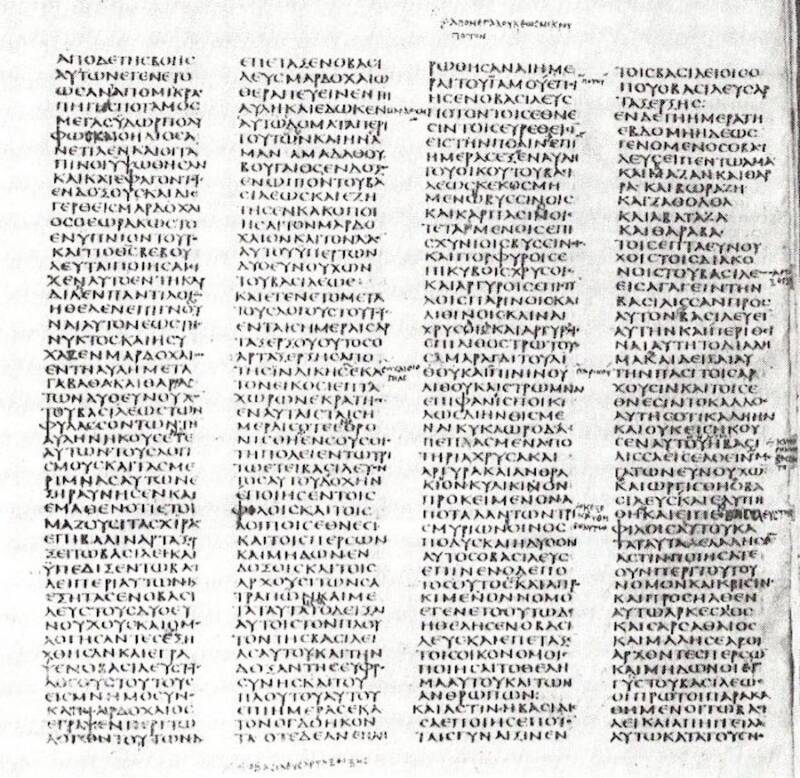The Bible stands as an unparalleled cornerstone of human civilization, its influence spanning millennia. Yet, despite its profound impact on societies worldwide, pinpointing its origin presents a challenging enigma: When precisely did the Bible come into being?
Comprising a diverse array of texts rather than a singular narrative, the Bible defies simple dating. Consequently, inquiries into its inception yield multiple responses. Some seek the origins of its earliest verses, while others ponder the completion of the Tanakh, or Hebrew Bible, significant for adherents of Judaism. Additionally, curiosity lingers over the compilation of the New Testament, pivotal in shaping the Christian sacred text.
Many Biblical books' authorship remains a mystery over time, while some are meticulously documented. Others face reconsideration as new evidence emerges and old traditions are reevaluated. Here, we delve into the extensive and intricate history behind the formation of one of humanity's most significant texts.
When Was The Bible's Old Testament Written?
 Auto Draft
Auto Draft The origins of the Hebrew Bible trace back to approximately the 10th century B.C.E., although scholars suggest its earliest verses may exceed 2,000 years in age.
Among the oldest passages in the Old Testament are believed to be Exodus 15 ("The Song of the Sea"), Deuteronomy 32 ("The Song of Moses"), and Judges 5 ("The Song of Deborah").
Traditionally attributed to Moses, the Pentateuch, comprising the initial five books of the Hebrew Bible and the Christian Old Testament, was ascribed to him. Supposedly living between the 14th and 13th centuries B.C.E., if Moses indeed authored these books, they would be remarkably ancient.
Many Biblical scholars now question the traditional belief that Moses authored all five books of the Pentateuch, particularly because one book, Deuteronomy, narrates Moses' death. Furthermore, the linguistic style of the earliest passages differs notably from other sections of the Pentateuch.
 When Was The Bible Written? Historical Evidence Unveiled
When Was The Bible Written? Historical Evidence Unveiled There are suggestions from religious leaders that Moses might have drawn from pre-existing oral traditions and integrated them into his writings. Alternatively, some propose that later authors, following Moses' notes, composed the books. In the past, names like Ezra the Scribe, who lived around 450 B.C.E., were proposed, though modern rabbis generally contend that Ezra likely revised the existing text rather than creating it anew.
Due to the scarcity of concrete evidence concerning the Bible's earliest composition, many scholars examine the archaeological findings for insights. Notably, the Silver Ketef Hinnom Scrolls, featuring a blessing from the Book of Numbers and dating back to the 7th century B.C.E., are among the most significant examples. Additionally, the Dead Sea Scrolls, containing Leviticus fragments, are estimated to be over 2,000 years old.
The process of compiling the texts that eventually formed the Bible likely commenced in ancient times, possibly predating the destruction of Judah and long preceding the birth of Jesus Christ. The entire Hebrew Bible reached completion around 100 C.E., indicating a span of several centuries for compilation.
Pinpointing the precise timeline of the Old Testament's formation poses a significant challenge due to the scarcity of accessible evidence from antiquity. In contrast, unraveling the origins of the New Testament is comparatively less complex.
When Was The Bible's New Testament Written?
 When Was The Bible Written? Historical Evidence Unveiled
When Was The Bible Written? Historical Evidence Unveiled The New Testament books were authored between the 1st and 2nd centuries C.E., with completion estimated over a span of approximately 50 years, significantly shorter than the Old Testament.
The earliest New Testament writings include the Pauline epistles, traditionally attributed to Paul the Apostle, composed around 50 C.E. Among them are general epistles like the Letter to the Hebrews, once ascribed to Paul but now believed to be the work of another writer, possibly St. Barnabas.
While it was previously widely accepted that Paul authored 13 of the New Testament books, contemporary scholars only unanimously recognize seven of his writings.
The Gospels, authored by the Four Evangelists—Matthew, Mark, Luke, and John—constitute the most significant part of the New Testament. Modern scholars posit that Mark's Gospel was the earliest, written around 70 C.E., influencing the compositions of Matthew and Luke. The Gospel of John likely reached completion around 90-100 C.E.
 When Was The Bible Written? Historical Evidence Unveiled
When Was The Bible Written? Historical Evidence Unveiled While the authorship of the New Testament may appear more straightforward than that of the Old Testament, some mysteries persist. The existence of the Q source, a hypothetical Gospel potentially containing additional teachings of Jesus, complicates matters, as no physical manuscript of Q has ever been found. However, scholars posit its existence based on similarities between Matthew and Luke, suggesting a shared written source.
The Book of Revelation, initially attributed to John the Apostle, is now believed to have been penned by a figure known as "John of Patmos" around 95 C.E. Despite initial skepticism due to its apocalyptic themes, early theologians eventually embraced Revelation as a fitting conclusion to the New Testament.
Building The Christian Holy Book
 When Was The Bible Written? Historical Evidence Unveiled
When Was The Bible Written? Historical Evidence Unveiled The Bible's books originated from diverse sources, necessitating the compilation of both the Old and New Testaments from pre-existing material. According to John Barton, former Oxford professor and author of A History of the Bible: The Books and Its Faiths, this compilation process involved integrating texts from various sources. "The [Old Testament] is a work of early Judaism. It should be remembered that for a long time it was a collection of individual scrolls, not a single book between two covers."
The Hebrew Bible, also known as the Tanakh, underwent a compilation process spanning several centuries. Its three main sections—Torah (Teaching), Neviʾim (Prophets), and Ketuvim (Writings)—were gathered from ancient scriptures dating back to the 10th century B.C.E. Completion of the Tanakh is believed to have occurred around 100 C.E., influenced by religious, political, and cultural factors of the time.
Early Christians regarded the Old Testament as foundational scripture, supplementing it with writings documenting the life of Jesus Christ and the early Christian movement, such as letters and Gospels. However, due to the scattered nature of the early Christian church and the presence of numerous competing ideas, the process of determining which books should be included in the New Testament was prolonged.
Over the years, various councils, religious leaders, and clergy members played roles in determining the inclusion and order of books in the Bible. The entire Christian Bible was not finalized until the late 4th century, with the Codex Sinaiticus, compiled during that period, considered the oldest manuscript of the Christian Bible.
 When Was The Bible Written? Historical Evidence Unveiled
When Was The Bible Written? Historical Evidence Unveiled The exact establishment date of the accepted list of Biblical books remains unknown. Athanasius of Alexandria is credited with compiling the earliest complete list of the New Testament canon around 367 C.E. However, some suggest the possibility of an earlier complete list.
It is improbable that Athanasius formulated the canon independently. As merely one religious leader among many, his list likely reflected a lengthy process of selection, the details of which are lost to history. Nonetheless, the New Testament had essentially reached its final form some 1,600 years ago, although numerous versions, such as the King James Version and the New International Version, have been published since then.
Determining the exact origins of the Bible prompts considerations of oral traditions or ancient Hebrew inscriptions on artifacts, as well as the approximate date of completion by early religious figures.
Alternatively, viewing the Bible as a product of an extensive multigenerational process highlights successive waves of scholars and spiritual leaders selecting, compiling, and adapting its components to align with their beliefs and requirements. Thus, while the Christian Bible reached completion in the late 4th century C.E., one could also perceive it as an ongoing work, continuously evolving throughout history.



















